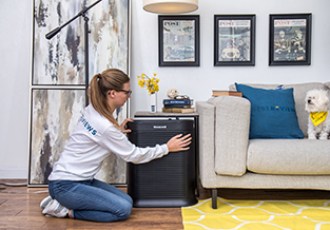We recommend these products based on an intensive research process that's designed to cut through the noise and find the top products in this space. Guided by experts, we spend hours looking into the factors that matter, to bring you these selections.

Like it or not, dirty laundry is a part of life. To keep it off the floor and organized, you need a place to stash it until you are ready to wash it. You don’t have to toss it in a corner, shove it under your bed, or hide it in your closet when you own a receptacle that is made especially for containing dirty clothes in between wash days. That’s why you need a laundry hamper.
Laundry hampers are available in different styles, from collapsible mesh baskets to attractive wood-slatted boxes. Some laundry hampers have dual compartments that make it easy to keep items sorted.

All laundry hampers share some common features, but they do vary a bit from one model to the next. A single-bin hamper with a flip-top lid is the most traditional design. Dual-sided hampers that divide your laundry (and help you sort) are also common. Collapsible laundry hampers are easy to carry and take up little space when not in use.
Here are a few questions to ponder before you set out to buy a new laundry hamper.
The answer to this question will help determine if you need a roomy hamper or something with just enough space to fit a few articles of clothing.
If you do, you may be looking to buy more than one hamper. There are laundry hampers made especially for youngsters, with scaled-down sizes and fun graphics.
If so, look for a smaller hamper or one that folds or collapses when not in use.
Laundry hampers that have two or more bins provide the organizational help you need to separate clothes before you wash them.
If you plan to stash it in a closet, spare bathroom, or laundry room, aesthetics may not be a top priority. If you plan to keep it where guests will be able to see it, however, you may wish to buy something attractive.
There are inexpensive hampers available that do the job without costing a lot of money.
If you plan to move your laundry hamper from room to room, handles — whether in the form of loops or easy-grab holes — are a must. They are typically situated on either side of a hamper, though hampers constructed of a flexible material like mesh or linen might have handles at the top for easy pick-up.
Not all hampers have lids, but those that do have a more finished look and conceal dirty laundry when closed. Some lids simply flip up and down, while others have hinges.
Some hampers have two separate compartments in one unit. This feature is great for keeping different types of clothes and linens separate ahead of laundry day.
Made of cotton or polyester, a fabric liner inside a hamper can easily be taken out to haul dirty laundry to the washing machine. Most have drawstring closures for added convenience.
Wheels aren’t commonly found on hampers, but some larger models have them for maneuverability.
Hampers that are made of woven or slated materials or plastic with open holes offer the best airflow to the contents inside. This is important to help prevent the growth of mildew and other substances that thrive in dark, wet places.
Most laundry hampers are made of one of four types of materials: fabric, weave, wood, or plastic. Fabric hampers are usually made of linen, mesh, or a combination of the two. They are lightweight, affordable, and easy to move. Woven hampers aren’t too heavy, either, and are made of wood fibers, resin, or bamboo. Many woven designs are quite attractive, just like those that are made of solid wood. Wood isn’t a practical material for a laundry hamper if mobility is a concern, but if you want something that looks like furniture, it’s a great choice. Plastic hampers aren’t very stylish, but they are practical and inexpensive.
Hampers are typically found in square, rectangular, and round shapes. They’re available in a wide range of sizes. Whether you’re part of a two-person household or a ten-person household, you should be able to find something suitable.

A good laundry hamper doesn’t have to break the bank. You can find efficient models in fabric and plastic designs that cost between $7 and $17.
Hampers made of fabric and inexpensive woven materials like resin or wood fiber generally cost between $20 and $45.
If you have a bit more to spend and want a hamper made of top-quality woven material or wood, expect to pay $50 to $200.
Hampers with lids, handles, and liners can be found across all price ranges, but you will likely pay a bit more for features like wheels or dual bins.

A. A laundry hamper liner is indeed handy, and many models have them. Remove the liner carefully when you take out your laundry and replace it promptly, so you don’t misplace it. Run it through the wash every few weeks with like colors to keep it fresh and clean.
A. It’s true that wicker isn’t the strongest structural material, but it’s attractive, lightweight, and breathable. If you choose a wicker hamper, keep it clean and dry. Don’t over-stuff it and avoid rough treatment. If treated properly, it should last for years.
A. If you own a hamper with two bins, you can sort your laundry in several different ways. The most straightforward method is simply separating lights and darks into the two compartments. However, you could also sort clothes based on who they belong to or how they need to be washed (for example, you could have a “delicates” side and a “regular” side).
Get emails you’ll love.
Learn about the products you’re wondering if you should buy and get advice on using your latest purchases.
